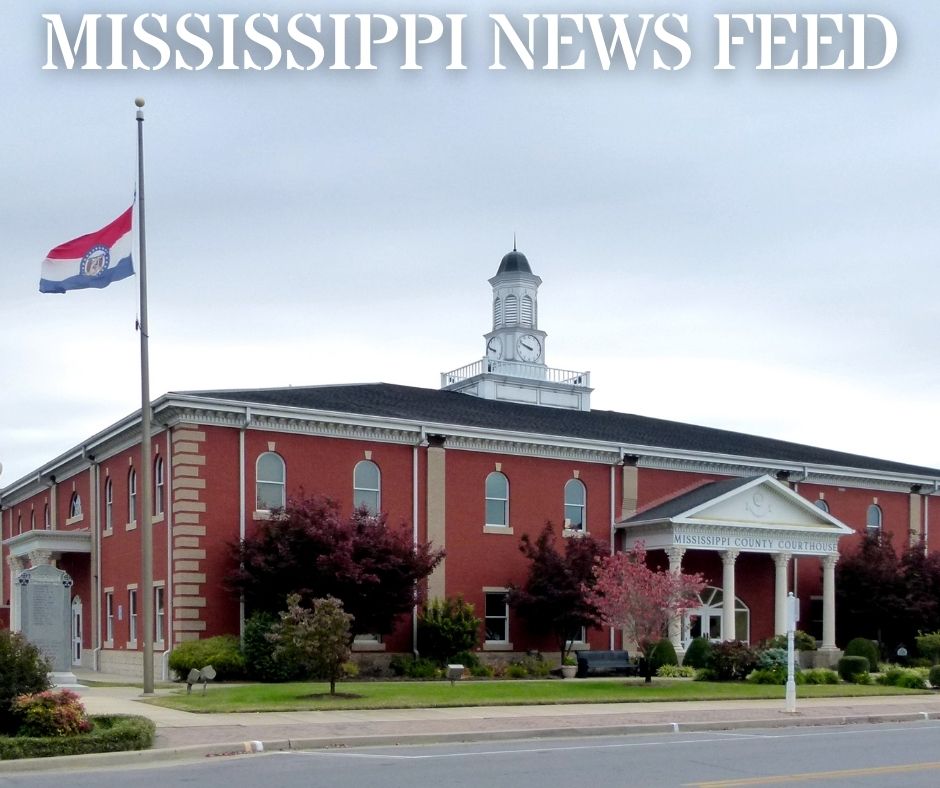News from the South - Louisiana News Feed
Foggy mornings next week, very warm afternoons
SUMMARY: The weather forecast for today shows sunny skies and warming temperatures, with highs in the low 70s. Although it’s chilly on the North Shore, it will be a great afternoon. Visibility will be reduced in some areas tomorrow morning due to fog, with potential for dense fog advisories. Fog will clear by midday, followed by partly cloudy skies and highs in the mid-70s. This week’s weather will stay warm, with a few showers expected mid-week. The Host Committee Parade will have perfect weather for those attending, with temperatures reaching the 70s by noon. WDSU will broadcast the event.
Foggy mornings next week, very warm afternoons
Subscribe to WDSU on YouTube now for more: http://bit.ly/1n00vnY
Get more New Orleans news: http://www.wdsu.com
Like us: http://www.facebook.com/wdsutv
Follow us: http://twitter.com/wdsu
Instagram: https://www.instagram.com/wdsu6/
News from the South - Louisiana News Feed
Facial recognition in policing is getting state-by-state guardrails • Louisiana Illuminator
Facial recognition in policing is getting state-by-state guardrails
by Paige Gross, Louisiana Illuminator
February 2, 2025
In January 2020, Farmington Hills, Michigan resident Robert Williams spent 30 hours in police custody after an algorithm listed him as a potential match for a suspect in a robbery committed a year and a half earlier.
The city’s police department had sent images from the security footage at the Detroit watch store to Michigan State Police to run through its facial recognition technology. An expired driver’s license photo of Williams in the state police database was a possible match, the technology said.
But Williams wasn’t anywhere near the store on the day of the robbery.
Williams’ case, now a settled lawsuit which was filed in 2021 by the American Civil Liberties Union and Michigan Law School’s Civil Rights Litigation Initiative, was the first public case of wrongful arrest due to misuse of facial recognition technology (FRT) in policing.
But the case does not stand alone. Several more documented cases of false arrests due to FRT have come out of Detroit in the years following Williams’ arrest, and across the country, at least seven people have been falsely arrested after police found a potential match in the depths of FRT databases.
Williams’ lawsuit was the catalyst to changing the way the Detroit Police Department may use the technology, and other wrongful arrest suits and cases are being cited in proposed legislation surrounding the technology. Though it can be hard to legislate technology that gains popularity quickly, privacy advocates say unfettered use is a danger to everyone.
“When police rely on it, rely on them, people’s lives can be turned upside down,” said Nate Wessler, one of the deputy directors of the Speech, Privacy and Technology Project at the national ACLU.
How are police using FRT?
Facial recognition technology has become pervasive in Americans’ lives, and can be used for small, personal tasks like unlocking a phone, or in larger endeavors, like moving thousands of people through airport security checks.
The technology is built to assess a photo, often called a probe image, against a database of public photos. It uses biometric data like eye scans, facial geometry, or distance between features to assess potential matches. FRT software converts the data into a unique string of numbers, called a faceprint, and will present a set of ranked potential matches from its database of images.
When police use these systems, they are often uploading images from a security camera or body-worn camera. Popular AI company Clearview, which often contracts with police and has developed a version specifically for investigations, says it hosts more than 50 billion facial images from public websites, including social media, mugshots and driver’s license photos.
Katie Kinsey, chief of staff and tech policy counsel for the Policing Project, an organization focused on police accountability, said that she’s almost certain that if you’re an adult in the U.S., your photo is included in Clearview’s database, and is scanned when police are looking for FRT matches.
“You’d have to have no presence on the internet to not be in that database,” she said.
Judge blocks enforcement of Louisiana’s 25-foot buffer zone for police
The use of FRT by federal law enforcement agencies goes back as long as the technology has been around, more than two decades, Kinsey said, but local police departments increased their use in the last 10 years.
Usually, police are using it in the aftermath of a crime, but civil liberties and privacy concerns are heightened with the idea that the technology could be used to scan faces in real time, with geolocation data attached, she said. Kinsey, who often meets with law enforcement officers to develop best practices and legislative suggestions, said she believes police forces are wary of real-time uses.
Boston Police attempted to use it while searching for the suspects in the 2013 Boston Marathon bombing, for example, but grainy imaging hindered the technology in identifying the culprits, Kinsey said.
GET THE MORNING HEADLINES.
Wrongful arrests
FRT’s role in wrongful arrest cases usually come from instances where police have no leads on a crime other than an image captured by security cameras, said Margaret Kovera, a professor of psychology at the John Jay College of Criminal Justice and an eyewitness identification expert.
Before the technology was available, police needed investigative leads to pin down suspects — physical evidence, like a fingerprint, or an eyewitness statement, perhaps. But with access to security cameras and facial recognition technology, police can quickly conjure up several possible suspects that have a high likelihood of a match.
With millions of faces in a database, the pool of potential suspects feels endless. Because the technology finds matches that look so similar to the photo provided, someone choosing a suspect in a photo array can easily make a wrong identification, Kovera said. Without further investigation and traditional police work to connect the match chosen by the technology to a crime scene, the match is useless.
“You’re going to up the number of innocent people who are appearing as suspects and you’re going to decrease the number of guilty people,” Kovera said. “And just that act alone is going to mess up the ratio of positive identifications in terms of how many of them are correct and how many of them are mistaken.”
Jeff Landry is traveling in a $5.5 million plane Louisiana State Police recently purchased
In the seven known cases of wrongful arrest following FRT matches, police failed to conduct sufficient followup investigation, which could have prevented the incidents. One man in Louisiana spent a week in jail, despite being 40 pounds lighter than a thief allegedly seen in surveillance footage. A woman who was eight months pregnant in Detroit was held in custody for 11 hours after being wrongfully arrested for carjacking, despite no mention of the carjacker appearing pregnant.
When Williams was arrested in January 2020, he was the ninth-best match for the person in the security footage, Michael King, a research scientist with the Florida Institute of Technology’s (FIT) Harris Institute for Assured Information, testified in the ACLU’s lawsuit. And detectives didn’t pursue investigation of his whereabouts before making the arrest.
Detroit police used the expired license image in a photo array presented to a loss-prevention contractor who wasn’t present at the scene of the crime. The loss prevention contractor picked Williams as the best match to the security cameras. Without further investigation of Williams’ whereabouts in October 2018, Detroit Police arrested him and kept him in custody for 30 hours.
The lawsuit says Williams was only informed after several lines of questioning that he was there because of a match via facial recognition technology. As part of the settlement, which Williams reached in the summer of 2024, Detroit Police had to change the way it uses facial recognition technology. The city now observes some of the strictest uses of the technology across the country, which is legislated on a state-by-state basis.
Police can no longer go straight from facial recognition technology results to a witness identification procedure, and they cannot apply for an arrest warrant based solely on the results of a facial recognition technology database, Wessler said. Because there can be errors or biases in the technology, and by its users, guardrails are important to protect against false arrests, he said.
Emerging laws
At the start of 2025, 15 states — Washington, Oregon, Montana, Utah, Colorado, Minnesota, Illinois, Alabama, Virginia, Maryland, New Jersey, Massachusetts, New Hampshire, Vermont and Maine — had some legislation around facial recognition in policing. Some states, like Montana and Utah, require a warrant for police to use facial recognition, while others, like New Jersey, say that defendants must be notified of its use in investigations.
At least seven more states are considering laws to clarify how and when the technology can be used — lawmakers in Georgia, Hawaii, Kentucky, Massachusetts, Minnesota, New Hampshire and West Virginia have introduced legislation.
Like all AI technologies, facial recognition can have baked-in bias, or produced flawed responses. FRT has historically performed worse on groups of Black faces than on white, and has shown gender differences, too. AI is trained to get better over time, but people seem to think that simply by involving humans in the process, we’ll catch all the problems, Wessler said.
But humans actually tend to have something called “automation bias,” Wessler said — “this hardwired tendency of people to believe a computer output’s right as many times as you tell somebody the algorithm might get it wrong.”
So when police are relying on facial recognition technology as their primary investigative tool, instead of following older law enforcement practices, it’s “particularly insidious” when it goes wrong, Wessler said.
“I often say that this is a technology that is both dangerous when it works and dangerous when it doesn’t work,” Wessler said.
Kinsey said in her work with the Policing Project, she’s found bipartisan support for placing guardrails on police using this technology. Over multiple meetings with privacy advocates, police forces, lawmakers and academics, the Policing Project developed a legislative checklist.
It outlines how police departments could use the technology with transparency, testing and standards strategies, officer training, procedural limits and disclosure to those accused of crimes. It also says legislation should require vendors to disclose documentation about their FRT systems, and that legislation should provide ways to address violations of their use.
The Policing Project also makes similar recommendations for congressional consideration, and while Kinsey said she does believe federal guidelines are important, we may not see federal legislation passed any time soon. In the meantime, we’ll likely continue to see states influencing each other, and recent laws in Maryland and Virginia are an example of a broad approach to regulating FRT across different areas.
Kinsey said that in her meetings with police, they assert that the technologies are essential to crime solving. She said she believes there is space for FRT, and other technologies used by police like license plate readers and security cameras, but that doing so unfettered can do a lot of harm.
“We think some of them can absolutely provide benefits for solving crime, protecting victims,” Kinsey said. “But using those tools, using them according to rules that are public, transparent and have accountability, are not mutually exclusive goals. They can actually happen in concert.”
YOU MAKE OUR WORK POSSIBLE.
Louisiana Illuminator is part of States Newsroom, a nonprofit news network supported by grants and a coalition of donors as a 501c(3) public charity. Louisiana Illuminator maintains editorial independence. Contact Editor Greg LaRose for questions: info@lailluminator.com.
News from the South - Louisiana News Feed
New Orleans health officials brace for cuts as Trump admin eyes ‘woke’ programs • Louisiana Illuminator
New Orleans health officials brace for cuts as Trump admin eyes ‘woke’ programs
by Katie Jane Fernelius, Verite, Louisiana Illuminator
February 2, 2025
NEW ORLEANS – Last week’s move by the Trump administration to freeze trillions of dollars of federal grants and loans — pending a top-to-bottom review to identify spending that does not align with the president’s ideological agenda — sent shockwaves through the country.
States reported that they couldn’t access Medicaid funds; nonprofit groups providing services such as crime victim advocacy and grants for scientific research warned that they may have to scale back their work; and colleges and universities cautioned that research and services supported by grants could come to a standstill.
The pause also caused consternation in New Orleans City Hall. The city’s government, like many municipalities, depends heavily on federal funding to operate.
According to the city’s adopted budget for 2025, New Orleans expects to receive more than $400 million in federal funds – more than 20% of total expected revenues for the year.
The funding pause, however, is itself now paused. First, the Office of Management and Budget rescinded the order. Then a judge temporarily blocked the order, following a lawsuit by a group of nonprofits. But city officials worry that even if the pause may be temporarily on hold, federal funding for vital services may still be eventually withdrawn.
GET THE MORNING HEADLINES.
Federal funds that go to the city aren’t concentrated in one department but can be found across various city departments and agencies. Federal money supports the Mosquito Control Board, the Office of Homeland Security and Emergency Preparedness and the Office of Resilience and Sustainability, among others.
But perhaps no department is at greater risk than the New Orleans Health Department, where more than half of the departmental budget and two-thirds of the staff would be immediately impacted by a full freeze on federal funding.
“No health department has enough funding to make up for a 60% cut in revenue,” New Orleans Health Department spokeswoman Isis Casanova said in an email. “We are discussing with city leaders about options to continue services and staff uninterrupted should a temporary freeze come to pass, but a permanent cut would be devastating to our operations (and those of cities in general).”
That’s no longer an immediate concern. But the federal review still looms, and a significant chunk of the department’s budget goes to the types of so-called “woke” programs that Trump says he wants to eliminate, including those used to provide health care services to homeless people, maternal and infant health and community-based anti-violence work.
‘Real and immediate consequences for public health’
On Monday, the federal Office of Management and Budget, which administers federal funding, announced a temporary pause to seemingly all such funding – an estimated $3 trillion of financial assistance provided across the country and abroad. The dramatic move left countless cities, states and organizations scrambling, as they questioned how the wide-reaching pause would impact them in both the short- and long-term.
The memo called for an across-the-board ideological review of all federally funded programs as part of the concentrated effort by President Donald Trump to attack progressive initiatives.
“The use of Federal resources to advance Marxist equity, transgenderism, and green new deal social engineering policies is a waste of taxpayer dollars that does not improve the day-to-day lives of those we serve,” wrote Matthew J. Vaeth, acting director of the Office of Management and Budget, in the memo.
Over the past several years, NOHD has shifted much of its focus to social and economic justice, following its most recent Community Health Improvement Plan, which addresses the social determinants of health. Under a Trump administration making broad attacks on diversity, equity and inclusion and other allegedly “Marxist” ideas, these justice-focused initiatives could come under fire.
Because of this, the city has long anticipated that it might need to fight to keep its federal funding.
Before Trump took office, New Orleans Health Department officials made a list of all programs they feared could be on the chopping block due to a Republican-controlled Congress paired with a Trump-led White House. They also developed a strategy to address any risks to their funding: planning, first, to proactively discuss the importance of these programs with federal agency staff and members of the congressional delegation and, second, to identify potential alternative sources of funding so they could maintain programming and staffing.
But the threat of a sudden and comprehensive funding pause has forced the department to act quickly to defend its programs.
In a Thursday document listing all the programs at immediate risk, Casanova wrote, “This is More Than A Funding Issue – It’s a Public Health Emergency.”
“The disruption of these programs is not just an administrative challenge — it has real and immediate consequences for public health,” Casanova continued. “Families, children, seniors, and vulnerable populations who rely on these services will be directly impacted.”
According to Casanova, some of the impacted programs include Healthy Start, which supports maternal and infant health, Health Care for the Homeless, which provides primary health care services, and Ubuntu Peace Ambassadors, a community-based violence interruption program. All three of the federal funding streams that back these initiatives are on a list of the more than 2,600 programs currently under OMB’s review, The New York Times reported.
According to data provided by the city, Healthy Start, which seeks to reduce infant mortality, served over 700 families in 2024, providing home visitation, prenatal support, breastfeeding support and car seat education, among other services. Healthy Start has also screened families for mental health and intimate partner violence.
Similarly, NOHD’s violence prevention efforts have been extensive. It also supported the distribution of more than 700 biometric firearm safes through the Children’s Hospital. And the Ubuntu Peace Ambassadors program has responded to over 100 shootings in the city.
“These programs have allowed us to effectively change the landscape within our communities,” Casanova said.
City health officials hope that they can keep funding in place to support these critical services. But at least one community partner says that it will keep up its work – regardless of whatever threats may come.
In an interview conducted before the funding pause commotion last week, Ernest Johnson, director of Ubuntu Village, cautioned against being swept up in the fearmongering caused by the Trump administration.
“Sometimes narrative can get people thinking and have a predictive threat,” Johnson said. “We aren’t going to shift, because of this threat. We may be a little more strategic, but that doesn’t mean we will abandon it because of what may come.”
YOU MAKE OUR WORK POSSIBLE.
This article first appeared on Verite News New Orleans and is republished here under a Creative Commons license. PARSELY = { autotrack: false, onload: function() { PARSELY.beacon.trackPageView({ url: “https://veritenews.org/2025/01/31/city-health-department-trump-funding/”, urlref: window.location.href }); } }
Louisiana Illuminator is part of States Newsroom, a nonprofit news network supported by grants and a coalition of donors as a 501c(3) public charity. Louisiana Illuminator maintains editorial independence. Contact Editor Greg LaRose for questions: info@lailluminator.com.
News from the South - Louisiana News Feed
Federal immigration officials have extensive technology at their disposal • Louisiana Illuminator
<
Federal immigration officials have extensive technology at their disposal
by Paige Gross, Louisiana Illuminator
February 1, 2025
As President Donald Trump deploys federal agents to carry out plans of mass deportations at the start of his term, he has a massive amount of technology at his disposal to track, categorize and surveil immigrants.
Immigration and Customs Enforcement (ICE), and Citizen and Immigration Services have spent $7.8 billion on immigration technologies from 263 different companies since 2020, the New York Times reported this week. The technologies include biometric tracking, such as facial recognition, voice analyzing, and fingerprint scanning, location tracking via software and ankle monitoring and rapid DNA testing tools.
The agencies also have access to investigative tools that can search through emails, text messages and other files on locked phones, and they contract with data analytics firms to store and sort through massive amounts of data compiled on immigrants currently in the U.S.
The access to these technologies is not new to the Trump administration. Much of the spending on these tech contracts began during President Joe Biden’s term, and many tools were designed for investigations of drug traffickers and other criminals, beginning after the 9/11 attacks.
GET THE MORNING HEADLINES.
Marina Shepelsky, an immigration attorney based in New York, said four groups of immigrants are being targeted in Trump’s raids. Those with criminal convictions will likely be the highest priority, she said, but those who have been issued a deportation order by a judge or those who entered the country under the Biden administration are also targets.
Anyone who is in the U.S. unlawfully without status, meaning without a visa, or on an expired visa, is at risk, Shepelsky said.
The Department of Homeland Security outlines the various uses of the AI technology that it has at its disposal, but Shepelsky said she sees it likely being focused on combing through immigration records, and cross-referencing data from visa applications, criminal records and social media platforms.
Federal agents are also likely using predictive AI modeling in various ways, she said, like assessing the likelihood of overstaying visas or engaging in criminal behavior. The department collects known information, like immigration status, compliance history, caregiver status and criminal history, and assigns each person something called a “hurricane score.” The score, ranked 1-5, is calculated by a machine learning algorithm designed to determine if a person may flee immigration proceedings.
Shepelsky warns of the systematic biases AI algorithms can produce; “[they] may unfairly target certain demographics, increasing risks of racial profiling,” she said.
Peter Salib, an assistant professor of law at the University of Houston Law Center said he, too, believes AI can streamline a lot about the immigration process. If your goal is to target immigrants who have committed serious crimes, as was policy under the Biden and Obama administrations, he said, AI can probably help you do that well.
“AI can really help you accomplish your goal and impose fewer costs on the people who don’t need to be swept up in enforcement,” Salib said.
But access to these technologies and intent are different things, Salib said. While the Biden administration had access to these tools in recent years, it was not planning the wide-reaching deportation efforts we’re seeing Trump execute now.
“The technology exists out in the world, and so even if you’re scared of a kind of slippery slope into using it poorly, it’s not really clear that you can get off that slope just by declining to use it when you are in the administration that has the ‘good’ goals,” Salib said.
Though there are ethical concerns with AI, there’s potential to improve parts of border security and citizenship processes with the technology, Shepelsky said. It’s helped process visa applications faster and detect fraudulent documents, as well as streamlined high-demand employment visas.
Technology will likely continue to play a role in Trump’s immigration policies and in other parts of his early administration agenda, Salib said.
“I think it’s the world we live in now,” Salib said. “And the choice we have is about policy more than about what technology is available to the people who want to enforce policies.”
YOU MAKE OUR WORK POSSIBLE.
Louisiana Illuminator is part of States Newsroom, a nonprofit news network supported by grants and a coalition of donors as a 501c(3) public charity. Louisiana Illuminator maintains editorial independence. Contact Editor Greg LaRose for questions: info@lailluminator.com.
-

 News from the South - Alabama News Feed5 days ago
News from the South - Alabama News Feed5 days agoTrump’s federal funding freeze leads to confusion, concern among Alabama agencies, nonprofits • Alabama Reflector
-

 Kaiser Health News5 days ago
Kaiser Health News5 days agoTrump’s Funding ‘Pause’ Throws States, Health Industry Into Chaos
-

 News from the South - Kentucky News Feed6 days ago
News from the South - Kentucky News Feed6 days agoKentucky’s bourbon industry worries as potential 50% EU-imposed tariffs loom
-

 News from the South - Kentucky News Feed2 days ago
News from the South - Kentucky News Feed2 days agoWKU Mourns Loss Of Cross Country/Track & Field Head Coach Brent Chumbley
-

 News from the South - Tennessee News Feed6 days ago
News from the South - Tennessee News Feed6 days ago1-year-old killed during domestic dispute in Murfreesboro
-

 News from the South - Florida News Feed6 days ago
News from the South - Florida News Feed6 days agoSpanberger and Earle-Sears want to make history in Virginia. But voters have election exhaustion
-

 Local News5 days ago
Local News5 days agoFormer Ole Miss QB Jaxson Dart continues to impress as the first Reese’s Senior Bowl practice wrapped up on Tuesday
-

 News from the South - Georgia News Feed4 days ago
News from the South - Georgia News Feed4 days ago“Very hard to believe”, locals react to arrest Lincoln County commissioner in child molestation investigation



























